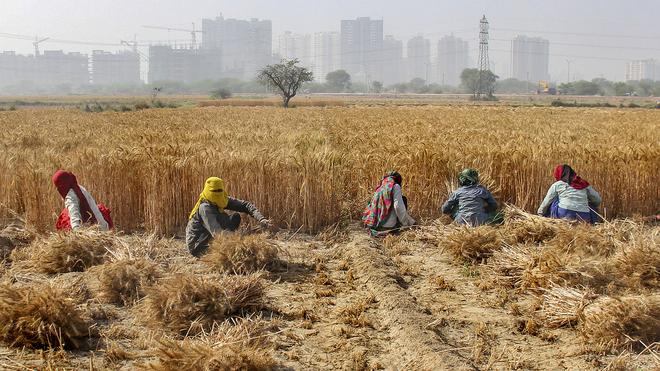Haryana Elections: Will congress’ recent gains in the rural areas, hurt BJP?
In the 2024 Lok Sabha polls, the BJP lost a significant share of its rural voter base, with much of it shifting to the Congress.
The BJP has also lost a chunk of votes in urban areas compared to the 2019 Lok Sabha polls, which again benefited the Congress, but nevertheless secured more than 50% of the votes in cities in the 2024 Lok Sabha elections.
Map 1 provides a geospatial representation of Haryana, divided into rural, semi-rural, semi-urban, and urban areas.
Map appears incomplete? Click to remove AMP mode
The Assembly seats abutting Delhi, such as Gurugram, Badshahpur, Badkhal, Faridabad, and Ballabgarh, are urban in nature, while those in the eastern border, along Uttar Pradesh, are classified as semi-urban or semi-rural. Seats in the western border along Punjab and Rajasthan are rural. In general, the State becomes increasingly rural as we move away from Delhi and the eastern border.
Notably, in the areas adjoining the relatively more urban eastern border and the rapidly urbanising places around Delhi, the voting population has surged, largely due to migration.
Map 2 shows the percentage change in electors in the 2024 Lok Sabha elections compared to the 2014 Lok Sabha polls.
The number of electors in the Assembly segments of Tigaon, Sohna, Gurugram, Faridabad NIT, Badshahpur, and Badkhal, in the Faridabad and Gurugram districts, have increased by over 50% in the period.
Table 3 shows that the BJP secured over 40% of the vote share in semi-urban areas and close to 50% of votes in urban seats in the recent Assembly elections (2014 and 2019).
The BJP’s vote share in such areas increased even further if the recent Lok Sabha elections are considered. The Congress, on the other hand, performed poorly, securing about 15%-25% in the recent polls (Lok Sabha and Assembly elections). However, the party managed to increase its vote share to 35% in the 2024 Lok Sabha polls by making a small dent in the BJP’s support base in urban areas.
In rural areas, the preference for regional parties such as the Indian National Lok Dal was more pronounced in the 2014 Lok Sabha and Assembly elections, with over half the voters choosing neither the BJP nor the Congress. The BJP managed to reverse this trend in the 2019 Lok Sabha elections by securing over 50% of the rural and semi-rural votes, and the Congress gained marginally too. But in the subsequent Assembly elections in 2019, the Jannayak Janta Party’s foray helped it secure a sizeable vote share, even if the total share of the regional parties was lower compared to the 2014 Assembly elections.
With the Congress gaining significantly in the 2024 Lok Sabha polls and the share of the regional parties shrinking further, the BJP has tried to stem its losses and regain support by lifting the export curbs on basmati rice. This move will benefit farmers in the State. Haryana and Punjab are the top two States in terms of production.
Map 4 shows the production of basmati rice in thousand tonnes for 2023.
If this move does have an impact, it will be most pronounced in the Assembly seats in the Jind and Sirsa districts followed by Karnal and Sonipat.
Source: Data for the maps and tables were sourced from the Election Commission of India, the Agricultural and Processed Food Products Export Development Authority, and the Development Data Lab. The urban-rural classification was done by aggregating night light intensity data on assembly constituencies, provided by the SHRUG database
nitika.evangeline@thehindu.co.in
vignesh.r@thehindu.co.in
Published - September 20, 2024 08:00 am IST

)
)
)
)
)
)
)


)


)
)
)
)
)
